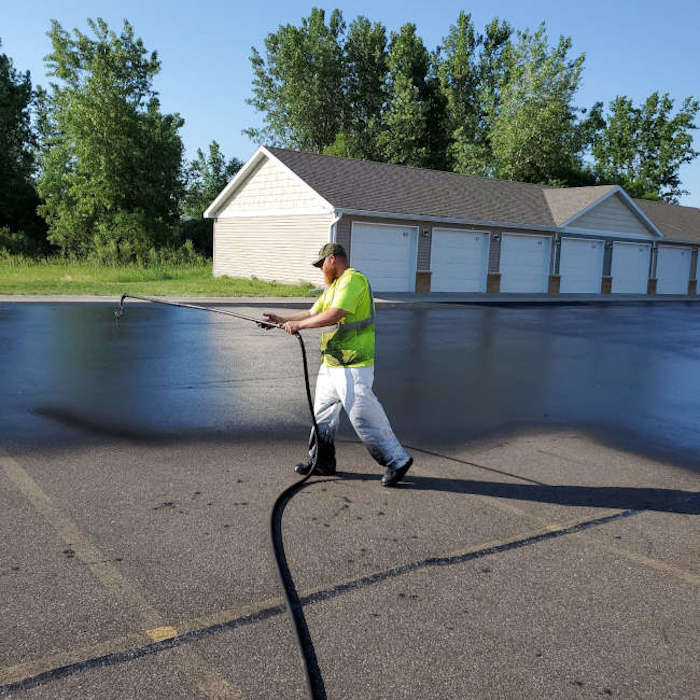Warm Mix Asphalt: A Sustainable Remedy for Pavement
Warm Mix Asphalt (HMA) has arised as a leading sustainable selection for sidewalk services, providing a myriad of environmental advantages and innovative modern technologies. As the demand for green building and construction techniques grows, discovering the nuances of HMA's sustainability can give useful understandings into the future of pavement remedies.
Environmental Benefits of Warm Mix Asphalt

Moreover, Hot Mix Asphalt assists to mitigate metropolitan warm island effects. Its dark shade absorbs sunlight, reducing the quantity of warm mirrored back into the ambience compared to lighter-colored pavements. This can lower ambient temperature levels in urban locations, lowering the demand for a/c and ultimately reducing energy usage.
In addition, Hot Mix Asphalt contributes to enhanced stormwater monitoring. Its porous nature permits water to charge and infiltrate the pavement groundwater materials, lowering runoff and the danger of flooding. These ecological advantages make Warm Mix Asphalt a lasting selection for leading freeways and roadways.
Power Efficiency in HMA Production
Is energy effectiveness a critical element in the manufacturing of Hot Mix Asphalt (HMA)? Absolutely. Energy plays a considerable duty in the production of HMA, influencing both price and ecological sustainability. One vital facet of power efficiency in HMA production is using warm mix asphalt (WMA) technologies (angled parking). WMA permits the blending and positioning of asphalt at lower temperatures compared to traditional warm mix asphalt, resulting in decreased energy intake throughout production. This process not only decreases gas use however also reduces greenhouse gas discharges, making it a more environmentally pleasant alternative.
Furthermore, advancements in plant modern technologies have brought about even more energy-efficient HMA production procedures. Modern plants are designed with features like recycled asphalt sidewalk (RAP) processing capabilities, effective heater systems, and enhanced insulation, all adding to power cost savings. By optimizing power usage in HMA manufacturing, the industry can lower its carbon footprint while preserving premium pavement materials. Power effectiveness is, therefore, a critical factor to consider in guaranteeing the sustainability of Warm Mix Asphalt production.
Recyclability of Warm Mix Asphalt
The recyclability of Hot Mix Asphalt (HMA) is an essential aspect of its navigate to this site sustainability and long-term ecological impact. HMA is just one of the most recycled products in the USA, with over 100 million lots of redeemed asphalt pavement (RAP) being recycled every year in new pavement building. Reusing HMA Go Here offers several ecological advantages, such as minimizing the demand for virgin products, reducing energy usage throughout manufacturing, and lowering the quantity of waste sent to garbage dumps.
The procedure of reusing HMA entails crushing the existing sidewalk, squashing it right into smaller sized items, and mixing it with brand-new aggregate and asphalt binder to create a recycled mix. This recycled mix can typically carry out as well as or also far better than traditional HMA, while requiring less raw materials and creating lower greenhouse gas discharges. By incorporating RAP into brand-new sidewalk jobs, road agencies can save natural resources, lower prices, and reduce the environmental footprint of roadway building and upkeep activities. In general, the recyclability of HMA plays a considerable role in advertising lasting practices within the sidewalk sector.

Long-Term Efficiency of HMA
Asphalt sidewalks demonstrate longevity and durability over an extensive period, mirroring the long-lasting performance of Hot Mix Asphalt (HMA) Furthermore, advancements in HMA innovation, such as the usage of polymer-modified binders and warm mix asphalt, have actually further improved the resilience and durability of HMA sidewalks. By prioritizing top quality construction and upkeep techniques, HMA continues to confirm itself as a cost-effective and lasting remedy for long-lasting pavement framework.

HMA: Toughness and Sustainability
Showing both resilience and sustainability, Hot Mix Asphalt (HMA) has actually ended up being a cornerstone in the building and construction of resilient pavement frameworks - angled parking. HMA's helpful hints resilience originates from its ability to hold up against heavy tons, severe climate condition, and high traffic volumes, making it a reliable option for roadways, freeways, and airport runways. The make-up of HMA, which generally consists of aggregates, binder, and filler, plays an important role in improving its long life and resistance to damage
Moreover, HMA's sustainability depends on its recyclability and energy-efficient production procedure. The ability to reuse recovered asphalt sidewalk (RAP) in new HMA mixes reduces the need for virgin products and reduces the environmental impact of sidewalk building and construction and maintenance. In addition, the energy efficiency of generating HMA depends on its reduced mixing temperatures contrasted to other pavement materials, resulting in lowered energy intake and greenhouse gas exhausts.
Conclusion
In conclusion, warm mix asphalt (HMA) uses a sustainable service for pavement with its environmentally friendly qualities. HMA's recyclability, energy performance in manufacturing, and long-lasting sturdiness make it an environment-friendly selection for roadway building.
HMA is one of the most recycled materials in the United States, with over 100 million loads of reclaimed asphalt sidewalk (RAP) being reused every year in new pavement building and construction.The process of reusing HMA includes milling the existing sidewalk, crushing it right into smaller sized pieces, and blending it with new accumulation and asphalt binder to create a recycled mix.Asphalt pavements show longevity and durability over an extensive period, reflecting the long-lasting performance of Hot Mix Asphalt (HMA) In addition, innovations in HMA innovation, such as the usage of polymer-modified binders and warm mix asphalt, have actually further improved the resilience and long life of HMA pavements. The capability to reuse recovered asphalt sidewalk (RAP) in brand-new HMA combinations minimizes the demand for virgin products and minimizes the environmental impact of sidewalk construction and upkeep.